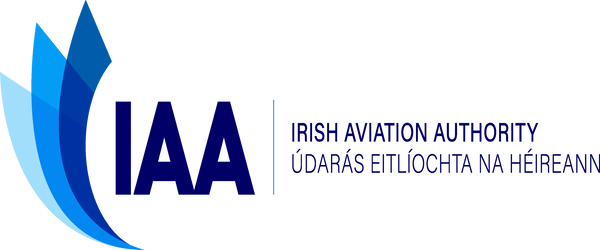This Irish Splendour Tour stays at Ireland’s best period properties.
This 7 night Irish Splendour self drive tour stays at the best period manors & guesthouses in Ireland. Start with two luxurious nights in the 5 star Powerscourt Hotel, then loop south through Cork and the scenic splendour of Dingle, before finishing in grand style at the magnificent Moy House in Lahinch or Gregans Castle Hotel in Ballyvaughan ( availability dependant) . This tour is full of old world charm and will make for an opulent & unforgettable dream vacation.
This itinerary is based on arriving through Dublin airport and departing through Shannon airport, the itinerary can be amended to suit alternative entry/exit points.
Overnight Locations:
Night 1 – Powerscourt Hotel, Wicklow
Night 2 & 3 – Hayfield Manor, Cork
Night 4 & 5 – Castlewood House or Emlagh House, Dingle
Night 6 & 7 – Moy House Lahinch or Gregans Castle Hotel, Ballyvaughan, Clare
These accommodations are subject to availability, if unavailable we will reserve accommodation of a similar standard.

| Low Season | Price Per person |
| Bed & Breakfast for 7 nights and Rental of an Economy Manual car | €1,226 pps |
| High Season | Price Per person |
| Bed & Breakfast for 7 nights and Rental of an Economy Manual car | €1,690 pps |
*pps=per person sharing
Tour package Includes :
- Economy Manual vehicle eg., Ford Fiesta with unlimited mileage based on a minimum of 2 people travelling together. Inclusive of: Collision Damage Waiver (CDW), theft protection (TP), government tax (VAT) and Location Service Charge (upgrade rates for larger or automatic transmissions are available on request).
- Full breakfast daily except on day one
- All local taxes and hotel service charges
- Confirmation documents for each of your accommodations including driving directions
- All rates above are per adult sharing, child and single supplements apply
- Low Season- November-March
- High Season- April-October
Day 1 – Wicklow
Upon collection of your rental car, you will be traveling south through County Wicklow, also known as the ‘Garden of Ireland’. First stop will be Powerscourt House & Gardens. Surrounding this 18th Century Palladian House in the foothills of the Wicklow Mountains, you will find a sublime blend of formal gardens, sweeping terraces, statuary and ornamental lakes together with secret hollows, rambling walks and over 200 varieties of trees and shrubs. Shortly after this, you will arrive at the ancient monastic settlement at Glendalough. Glendalough “the glen of the two lakes” is a truly spellbinding place – an ancient monastic settlement and two clear water lakes beneath the sheer cliffs of a deep valley, which was carved out by glaciers during the Ice Age. The monastic settlement has been a centre for pilgrims and visitors since its foundation by St. Kevin in the 6th century. From here, follow the signs for Avondale House. Built in 1779 Avondale House is set in the spectacular surroundings of Avondale Forest Park, now a museum to the memory of one of the greatest political leaders of modern Irish history, Charles Stewart Parnell, who was born in Avondale on 27th June, 1846.
Day 2 – Cork
From Wicklow travel down to Cork via Waterford. In Waterford visit the new Waterford Crystal Factory. Waterford Crystal has a long tradition of extending a warm welcome to tourists from all over the world. There is now a new Waterford Crystal manufacturing facility, retail outlet and visitor centre in the heart of Waterford city which employs 80-90 full-time staff at the facility, a number of whom will be highly skilled local craftsmen. Also in Waterford is the Waterford Treasure Museum close to the Waterford Crystal facility. From here head towards Cork.
The following route includes visits to Midleton, Youghal & Cobh. Youghal is famous for its point lace (point d’Irlande) which is distinguished by its vivid patterns as well as the fact that the film ‘Moby Dick’ starring Gregory Peck was filmed here in 1956. After Youghal, you will travel to the village of Cobh. Cobh, situated on one of the world’s largest natural harbours, was the last port of call for the ill-fated Titanic in 1912 and was the closest port to the site of the sinking of the Lusitania in 1915. The heritage centre sympathetically recounts these events and tells the story of emigration from Ireland to the United States and Australia from the time of the famine in 1847 up to the 1950s.
Day 3 – Cork
Today you could take a short drive to Kinsale ( about 30 mins). Kinsale is a delightful harbour town that has retained its old world charm and character despite being well developed from a tourism point of view with its beautiful waterside location, local facilities including a yacht marina and historic buildings such as Desmond Castle and Market House as well as Charles Fort overlooking the sea and town. Kinsale styles itself as the gourmet capital of Ireland, boasting numerous excellent restaurants where you could have lunch. Return to Cork city in the afternoon for a little shopping. Make sure to visit the English Market which comprises of Princes Street Market and Grand Parade market . A mix of traditional Cork fare and exciting new foods from afar, combined with long standing family-run stalls contribute to the unique appeal and atmosphere of this market.
Long recognised by locals as a place to meet, eat and shop, the English Market offers tourists and locals alike a tantalising range of Irish food.
Day 4 – Dingle
You will have a bit of a long journey today to Dingle. I would recommend travelling north to Cork where you can visit the famed Blarney Castle where a climb to the ramparts to kiss the Blarney Stone is said to bestowe the gift of eloquence, otherwise known as ‘the Gift of the Gab’. From here travel to Macroom and onwards to Dingle. The Dingle Peninsula has more interesting antiquities, historic sites and varied mountain scenery than any other part of Ireland. Dingle is the most westerly town in Europe and attracts large numbers of visitors each year, many of whom come to learn the Irish language in the surrounding ‘A Flor-Gaeltacht’ – Irish speaking district. On route stop in the village of Annascaul, the birth place of Jerome Connor, the famous sculptor, and Tom Crean, a local hero who accompanied Scott and Shackleton on three Antarctic expeditions, including Scott’s doomed attempt to reach the South Pole. On his return to Annascaul Crean opened the “South Pole Inn”, which is still in business today. Minard Castle is also well worth a visit. The castle is said to have been built by the Knight of Kerry and is the largest fortress on the peninsula. Continue on past Dingle and visit Dunbeag Promontory Fort. What makes it one of the most dramatic archaeological sites on the peninsula is that results show that it was begun in the late Bronze Age, 800 BC. Continue on to Slea Head and here you will see Dun An Oir (Fort of Gold. Here in 1580, after three days siege, over 600 Irish and Spanish soldiers surrendered to Lord Grey only to be massacred by his troops. Nearby is the Gallarus Oratory, one of the best preserved early Christian church buildings in Ireland. Back to Dingle for the evening. Here you will find among other great pubs and restaurants, Dick Macks, possibly Dingle’s most famous pub, which is half a leather shop and half a pub so you can buy a pint and a purse at the same time! Foxy John’s is a hardware store and pub combined – an unusual arrangement to say the least.
Day 5 – Ring of Kerry
You have a number of touring options. Chief amongst these is the Ring of Kerry driving tour. The Ring of Kerry is a journey through some of the country’s most outstanding scenery around the Iveragh Peninsula. Stunning mountain and coastal scenery combined with colourful towns and villages will make this one of the highlights of your tour. For those who wish to take a break from driving we can arrange a bus tour through this route. Following the peninsula drive, you then arrive at Muckross House. Muckross House is a magnificent Victorian mansion completed in 1843 for Henry Arthur Herbert. The location of the House is spectacular, close to the eastern shore of Muckross Lake and set beneath the impressive backdrop of Torc and Mangerton Mountains. As an alternative to the Ring of Kerry tour you may prefer to take a wonderful tour by pony and trap that takes you through the Black Valley in the Gap of Dunloe. After a snack at Lord Brandon’s Cottage, you will return to Killarney by boat via the beautiful lakes of Killarney.
Day 6 – Clare
After an early breakfast depart Dingle in the direction of Brandon to drive over the renowned Conor Pass, Ireland’s highest mountain pass. At the summit Brandon and Tralee Bays can be seen to the north, with the sandy Castlegregory peninsula separating them and to the south lies Dingle Bay. Continue to Tralee and Tarbert where you will take a ferry crossing on the Shannon Estuary to County Clare. Continue north to the Cliffs of Moher. The majestic Cliffs of Moher are without doubt one of Ireland’s most spectacular sights and overlook the Atlantic Ocean on the coast of West Clare. You then arrive at the village of Doolin. Doolin is world-famous for its wealth of Irish folk music and in recent years has been attracting crowds to spontaneous sessions in any one of its excellent pubs. Just north of the Cliffs you then have the lunar like Burren region and the ancient Poulnabrone Dolmen Tombs as well as the Aillwee Caves. That evening travel to either Gregans Castle Hotel in Ballyvaughan or Moy House in Lahinch.
Day 7 – Day trip to Clare
Today we travel to the hauntingly beautiful Connemara Region. Situated on the most western seaboard of Europe, this unspoilt region boasts breathtaking scenery. The characteristic features of Connemara include its rugged, unpolluted coastline, dramatic mountains, numerous lakes and rivers and woodlands and the renowned Connemara National Park. Visit Kylemore Abbey and the Lough Inagh Valley as well as the spectacular Sky Road near the town of Clifden. You can also visit the fishing village of Roundstone and see how a ‘Bodhran’ (traditional Irish Drum) is made. Alternatively, you may prefer to take the ferry to the Aran Islands. Aran will take you back to an Ireland of Celts and Early Christians. Take a pony and trap, or a guided tour from the pier up the island to the stone fort of Dun Aengus. Dún Aengus fort is located on top of a 300ft high sea cliff and is one of the finest prehistoric monuments in Western Europe.
Overnight in Clare
Day 8 – Depart from Shannon airport
[/wptabcontent] [wptabtitle] <big> Tour Highlights</big> [/wptabtitle] [wptabcontent]
Glendalough 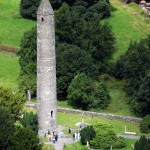
Glendalough is known for its spectacular scenery, rich history, archaeology and abundant wildlife. It is a remarkable place that will still your mind, inspire your heart and fill your soul. This early Christian ecclesiastical settlement was founded by St. Kevin in the 6th century. Set in a glaciated valley with two lakes, the monastic remains include a superb round tower, stone churches and decorated crosses. The Visitor Centre has an interesting exhibition and an audio-visual show.
Blarney Castle 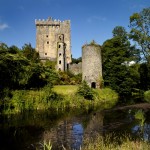
This historic castle is most famous for its stone, which has the power of conferring eloquence on all who kiss it. The word blarney was introduced into the English language by Queen Elizabeth I and is described as pleasant talk, intended to deceive without offending. The stone is set in the wall below the battlements and to kiss it, one has to lean backwards, (grasping an iron railing) from the parapet walk. Blarney Castle has long been famous because of the Blarney Stone but the less known Rock Close and castle grounds are well worth a visit in their own right. Many different gardens are to be found around the estat and exploration will be rewarded. There is a fern garden with the atmosphere of a tropical jungle to be found deep in the woods. The Poison Garden, adjacent to the battlements, contains an interesting and educational collection of deadly and dangerous plants from around the world, including caged specimens of deadly nightshade, wolfsbane and poison ivy. The Rock Close is a mystical place where majestic yew and oak trees grow around an ancient druidic settlement. Follow the trail through giant gunnera leaves and bamboo and you will find such features as a dolmen, wishing steps and a witch’s kitchen. A water garden with waterfalls adds the soothing sound of water to the visitor’s experience. There are pleasant walks along the riverbanks where you can sit and contemplate the reflections of the castle. In springtime the castle grounds are filled with thousands of bulbs and the ‘Belgian beds’, full of hybrid azaleas are in full flower. In autumn the whole place glows as the leaves turn red, amber and gold.
Cliffs of Moher 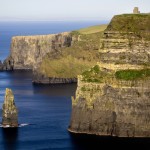
The Cliffs of Moher, one of Ireland’s top visitor attractions, loom high over County Clare’s west coast. Standing 214 metres at their highest point, the cliffs stretch for 8km along the Atlantic coastline. From the cliffs, one can see the Aran Islands, Galway Bay, The Twelve Bens, the Maam Turk Mountains in Connemara and Loop Head to the south. O’Brien’s Tower, another of Ireland’s most photographed landmarks, guards one prominent headland of these majestic cliffs. The Burren and Cliffs of Moher region of north Clare has been awarded the prestigious designation of membership of the UNESCO supported Global Geopark network at the 10th European Geoparks Conference in Langesund, Norway. This iconic location attracts close to one million visitors per year.
The unusual, underground visitor centre also houses the exciting Atlantic Edge display. This huge, domed cave contains images, exhibits and displays. The centre also has a gift shop stocking official Cliffs of Moher products, maps, guides, books and DVDs, visitor information and an accommodation booking service. Other facilities of this fully wheelchair accessible premises include a baggage store and ATM. Friendly staff will answer questions, provide assistance, give information on and directions to other attractions in the area
Muckross House & Gardens 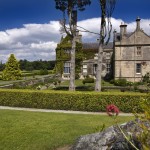
This magnificent Victorian mansion – one of Ireland’s leading stately homes – is situated amidst the spectacular scenery of Killarney National Park in County Kerry. The elegantly furnished rooms portray the lifestyles of the landed gentry, while downstairs in the basement you can experience the working conditions of the servants employed in the House back in the day.
Muckross House is also home to a number of skilled craftworkers, who can be seen using skills in the crafts of weaving, pottery and bookbinding. Many exotic trees and shrubs flourish in the mild climate and sheltered location of the Muckross gardens. Attractive features include a fine collection of rhododendrons and azaleas, an outstanding rock garden on a natural rock outcrop and beautiful tree-fringed lawns.
